Your garden is more than just a collection of plants—it’s an extension of your home where you can let your personality shine. In this guide, we’ll provide tips for decorating this outdoor space inspired by the southern California garden of interior designer Susie Beall and her architect husband Ed.
1. Use Ornaments as Finishings
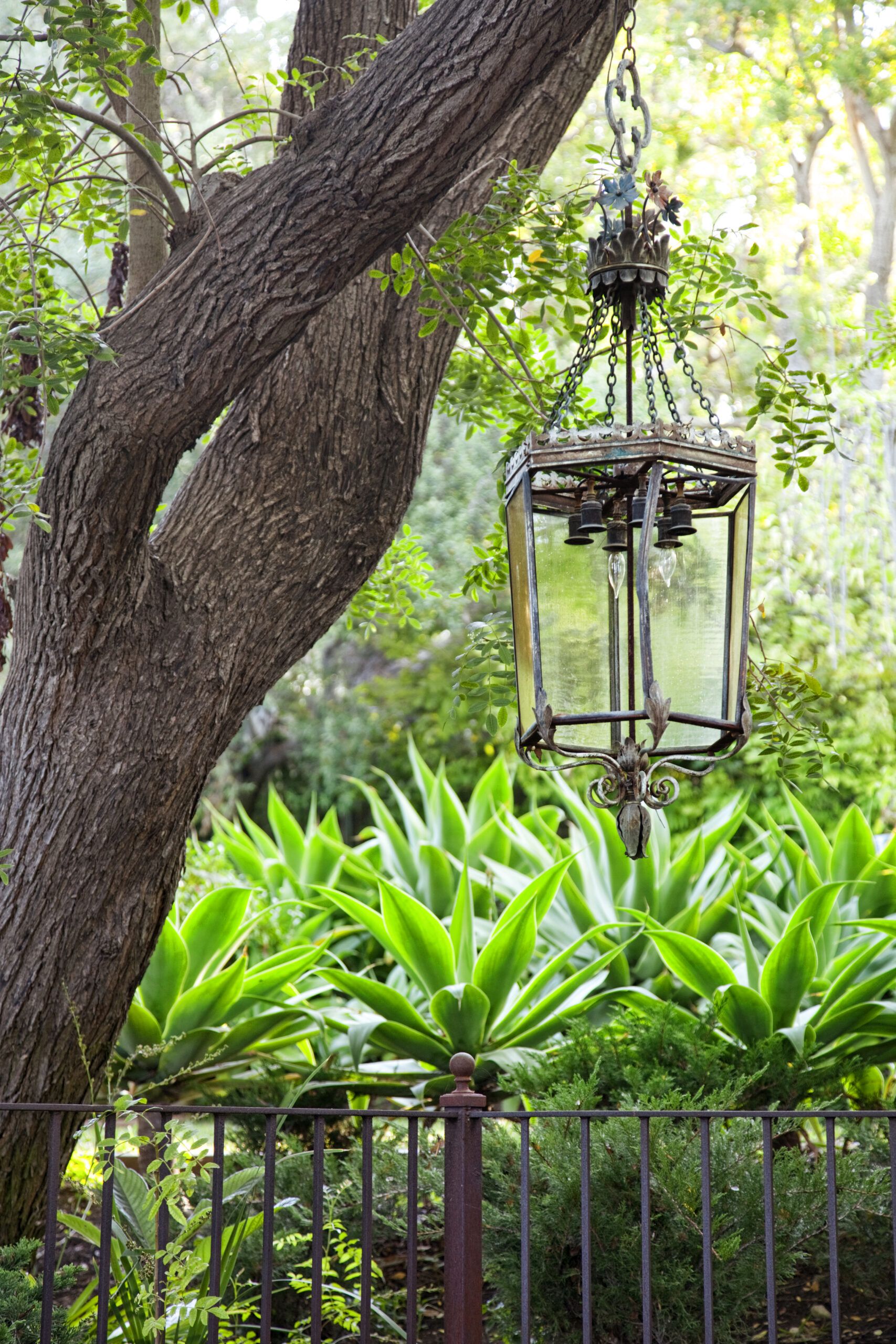
Garden ornaments can serve as subtle cues that direct attention and movement throughout the space. A wrought-iron gate can mark the entrance, while a tree-hung lantern adds vertical interest. Choose a curated selection of ornaments that complement your garden’s style and enhance its natural beauty.
Shown: A weathered iron pendant hangs from a tree over a bed of agaves.
2. Design for Outdoor Rooms
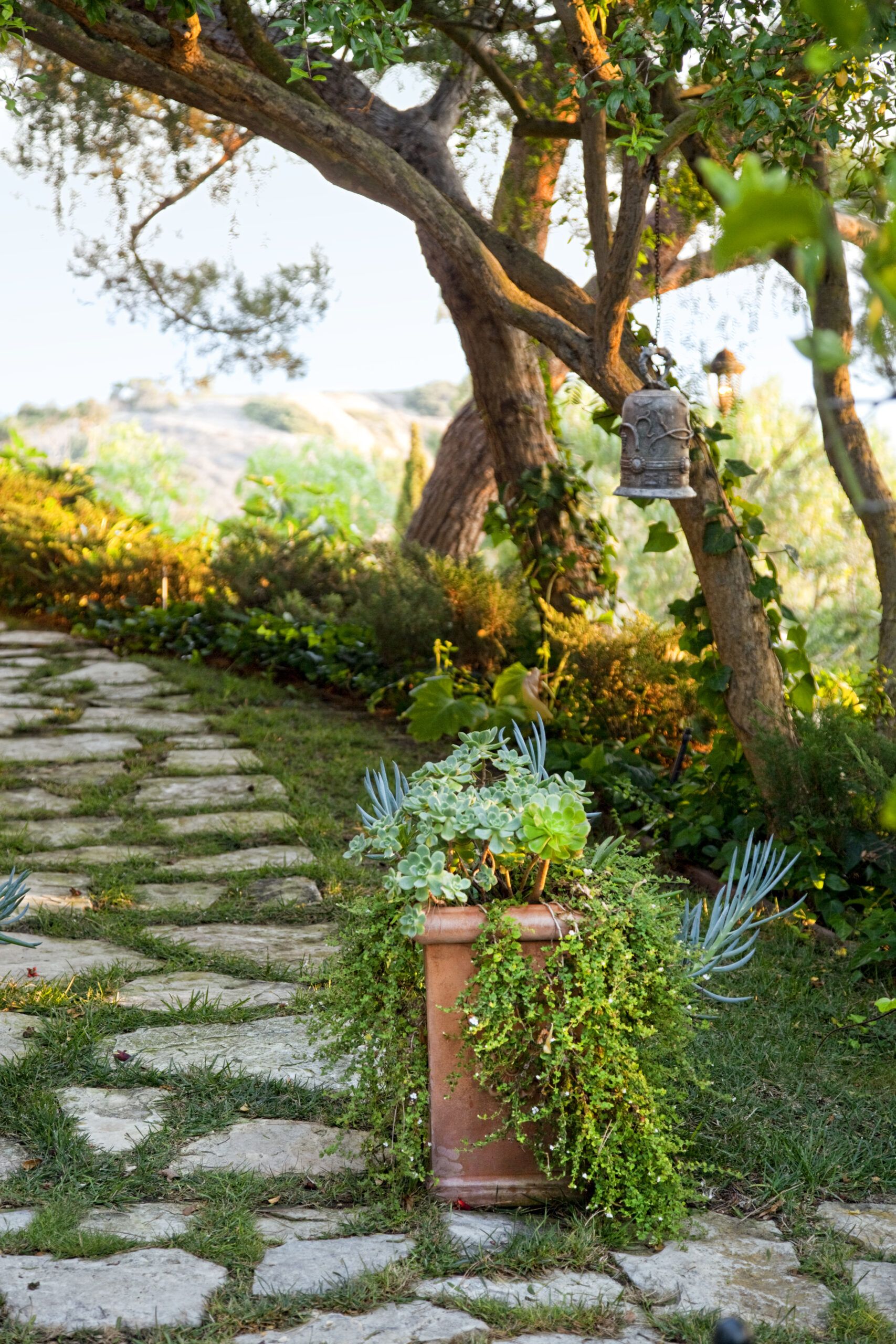
Create distinct outdoor rooms within your garden to maximize its functionality and appeal. Different areas can serve various purposes, like dining, reading, or meditation spaces.
Beall aimed for comfort when using this approach, creating exterior rooms that felt as inviting and livable as those inside her home. “A furnished garden shouldn’t look too perfect or contrived,” she says.
Use a mix of hardscaping, plants, and furniture to define each area. Pathways can connect your outdoor rooms, and strategically placed screens or tall plants provide privacy and separation.
Shown: Succulents spill out of a pillar-like planter at a path entrance, with an iron bell hanging from a nearby tree.
3. Don’t Be Afraid of Patina
Embrace patina in your garden decor to add depth and character. Weathered finishes on metal, wood, or stone elements create a lived-in and organic feel.
The Bealls applied this philosophy to their garden by choosing a simple, mostly green palette for their plants. This restrained backdrop allowed their carefully selected ornaments, many with aged finishes, to stand out. “Garden decor can get lost in a highly colorful landscape,” Beall says. “For us, our mostly stone ornaments are the busy part, and they pop against the green background.”
Mix high-end pieces with affordable finds for an eclectic, curated look when incorporating patinated elements without feeling too precious.
4. Repeat Your Home’s Exterior Style
Create a seamless transition between your home and garden by echoing your home’s architectural style in your garden decor.
For instance, if your home features rustic stone cladding, consider using similar materials for garden walls, pathways, or decorative elements. In the Bealls’ garden, iron urns and terra-cotta pedestals complement the entryway. A pediment decorated with dolphins and holding succulents is a focal point that ties into the overall theme.
Tip: Keep scale in mind when choosing your ornamentation. Larger homes may require more substantial pieces to maintain visual balance, while smaller homes can benefit from more delicate decor.
5. Dress Up Garden Entrances
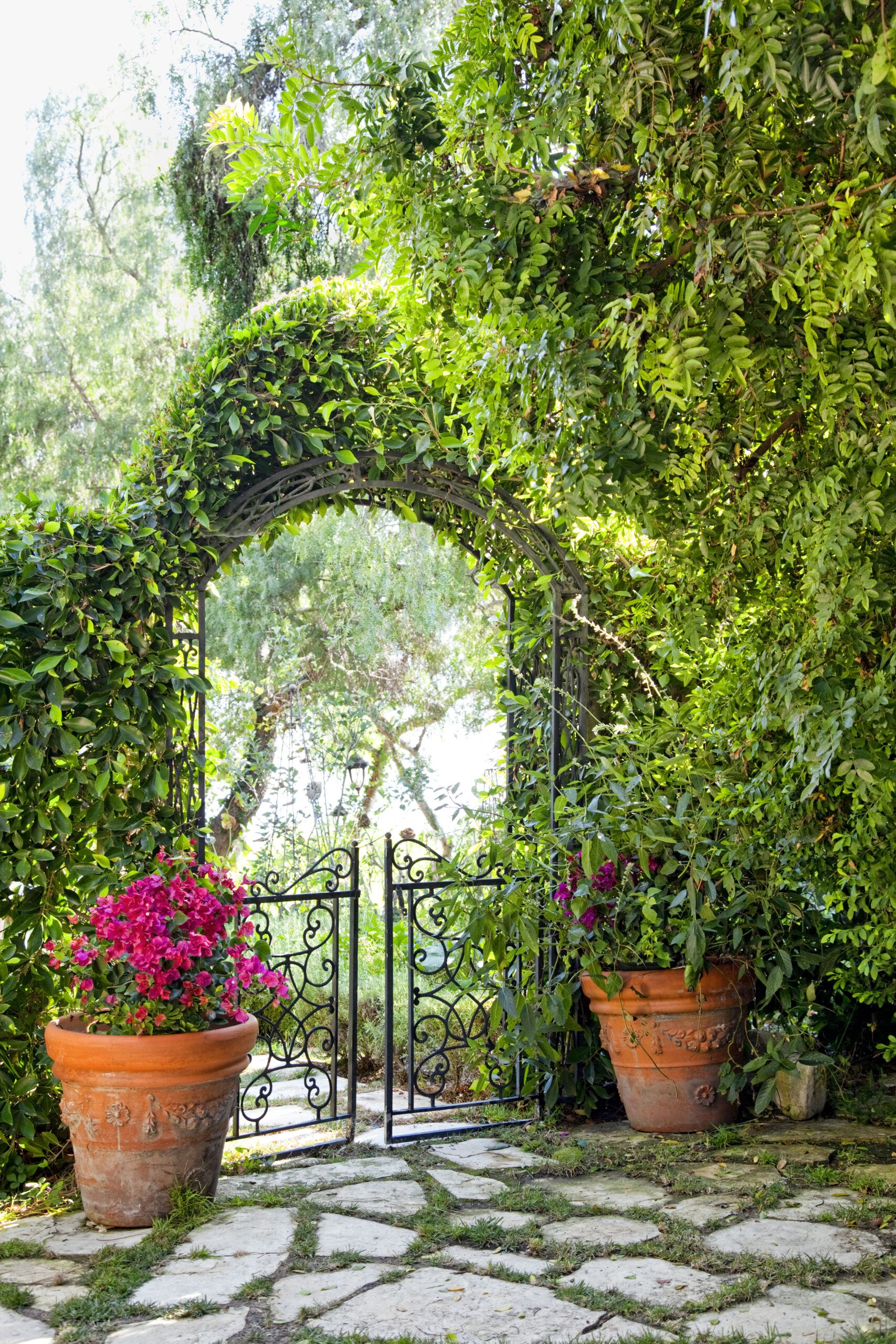
Structures like arbors, pergolas, or ornate gates can mark entrances and create vertical gardening space. Add potted plants, statuary, or paved pathways to accentuate these entry points.
The Bealls used iron arches and gates, many sourced from gardener’s supply catalogs and covered with vines, to mark transitions between different garden areas. They also placed potted bougainvillea, citrus trees, and palms to accent entries, along with finials and pedestals.
6. Tie Furnishings Into the Overall Scheme
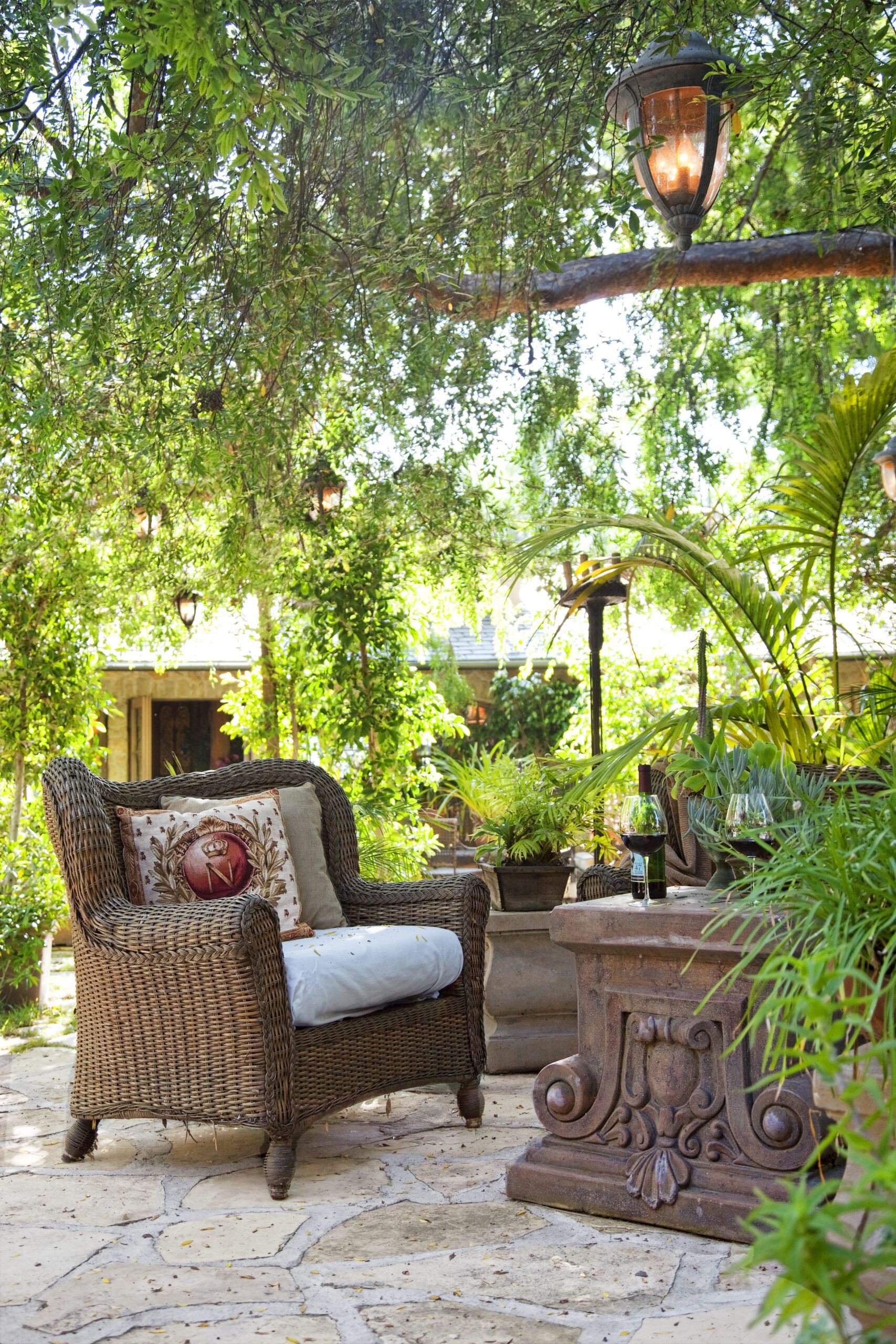
Select furniture that integrates with your overall design scheme. Choose pieces that complement the styles of your home and garden.
The Bealls found inexpensive rust-finished iron dining sets that harmonize with their garden’s rustic aesthetic. They created a casual lounge perfect for cocktails and conversation by scattering extra chairs around a paved area.
Tip: Take your climate into account—choose materials that can handle your local weather for the long haul.
7. Choose Decor Suited for the Outdoors
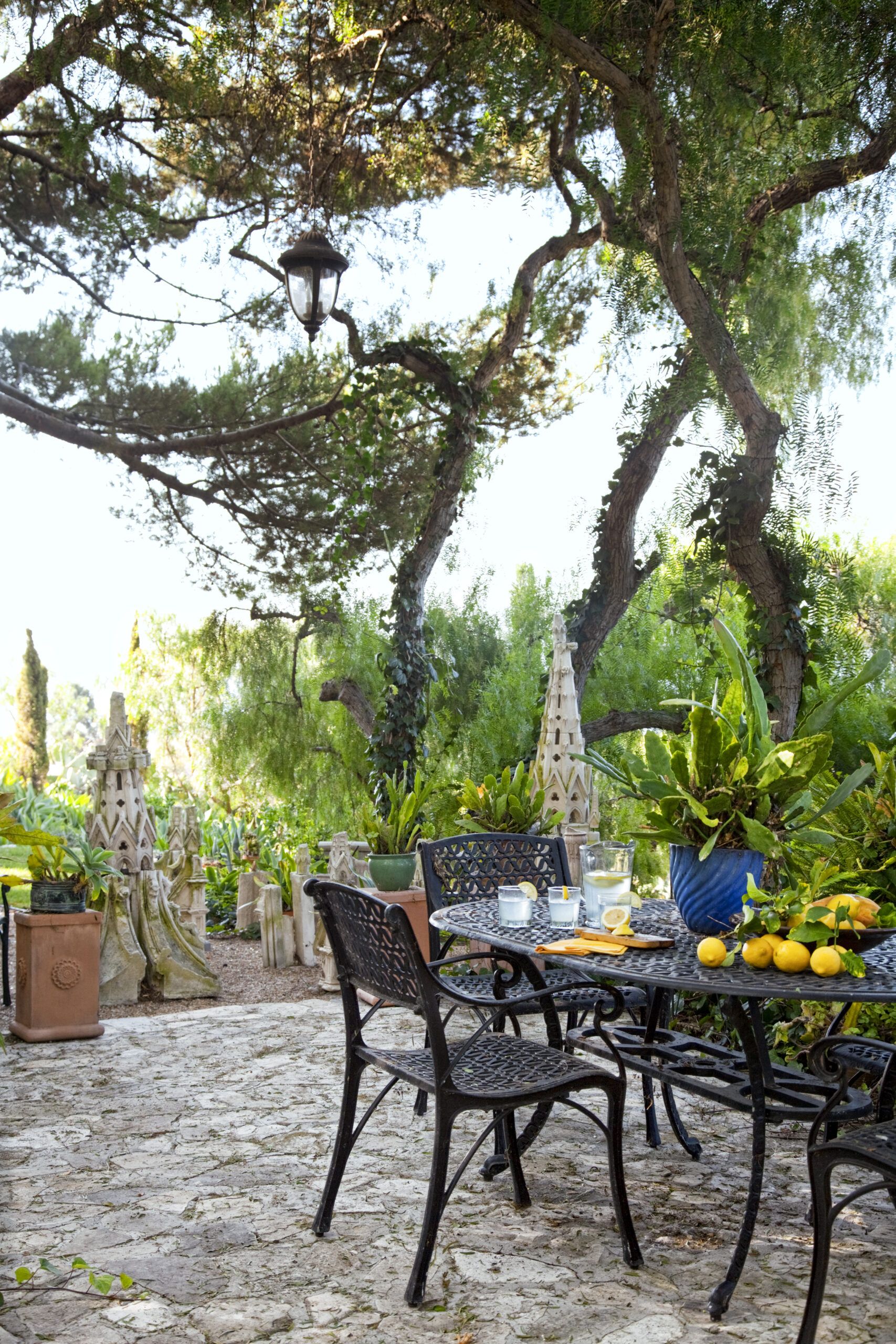
Pick items designed to withstand outdoor conditions or that are easy to weatherproof. Durable materials like powder-coated aluminum, teak, or all-weather wicker are ideal for garden furniture.
For example, the Bealls built an outdoor living room using wicker chairs from an import store. To make the chairs suitable for outdoor use and protect them from the elements, they applied a spray-on marine varnish.
8. Take Lighting to Another Level
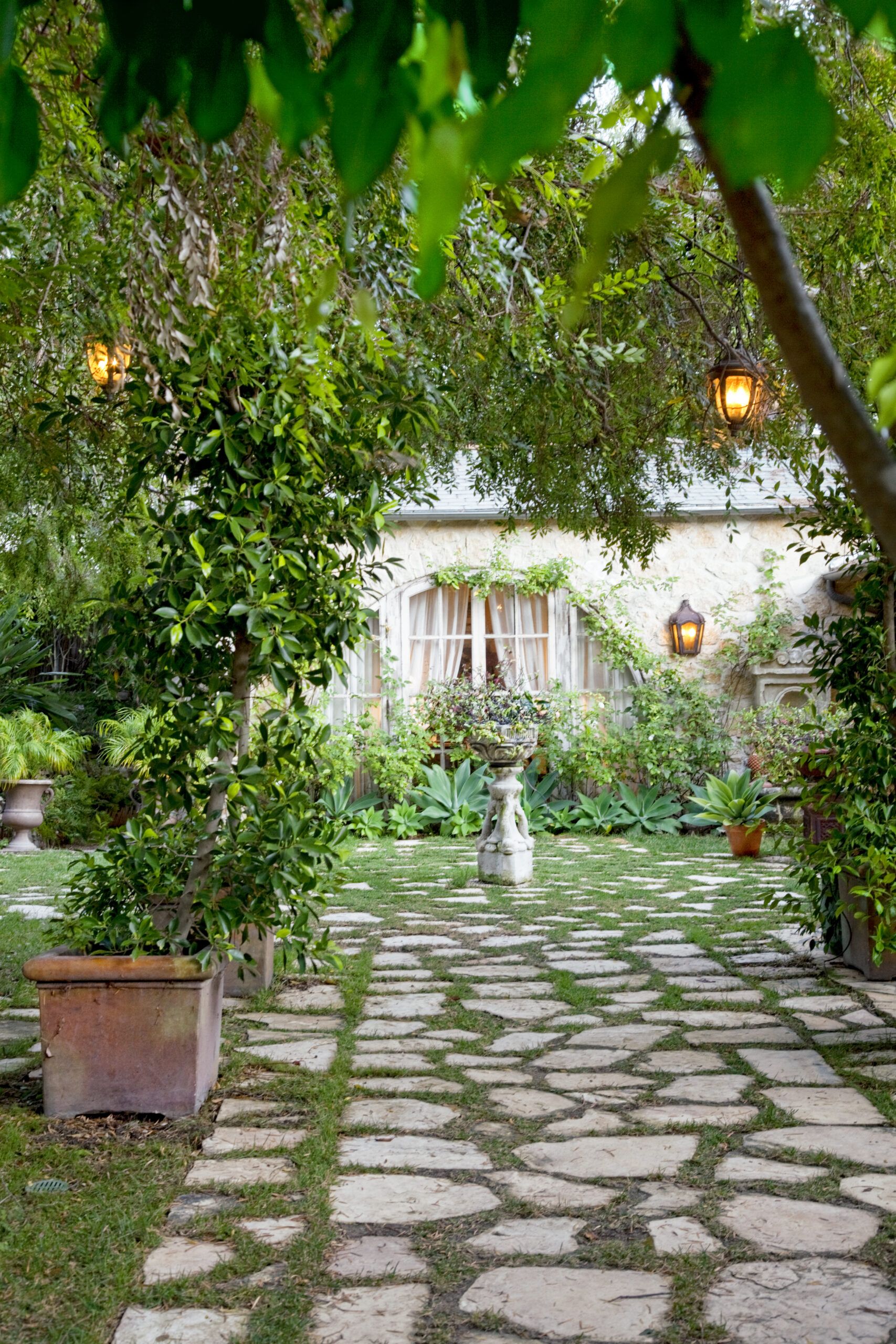
While functional lighting for paths and entrances is important, go beyond the basics to enhance your garden’s nighttime appeal.
The Bealls elevated their garden lighting by hanging outdoor lanterns from tree branches, creating a romantic, almost fairytale-like ambiance. Tall streetlight-style lamps add both illumination and architectural interest.
Here are some lighting techniques we recommend:
- Accent lighting to draw attention to specific plants or garden ornaments
- Downlighting to create a moonlight effect through foliage
- Path lighting for safety and to guide movement through the garden
- Uplighting to highlight trees or architectural features
Try coordinating your outdoor lighting fixtures with those on your home’s exterior for a cohesive look. Use warm-toned bulbs to create a more inviting atmosphere, and explore solar-powered energy-efficient options.
9. Showcase Plant Collections
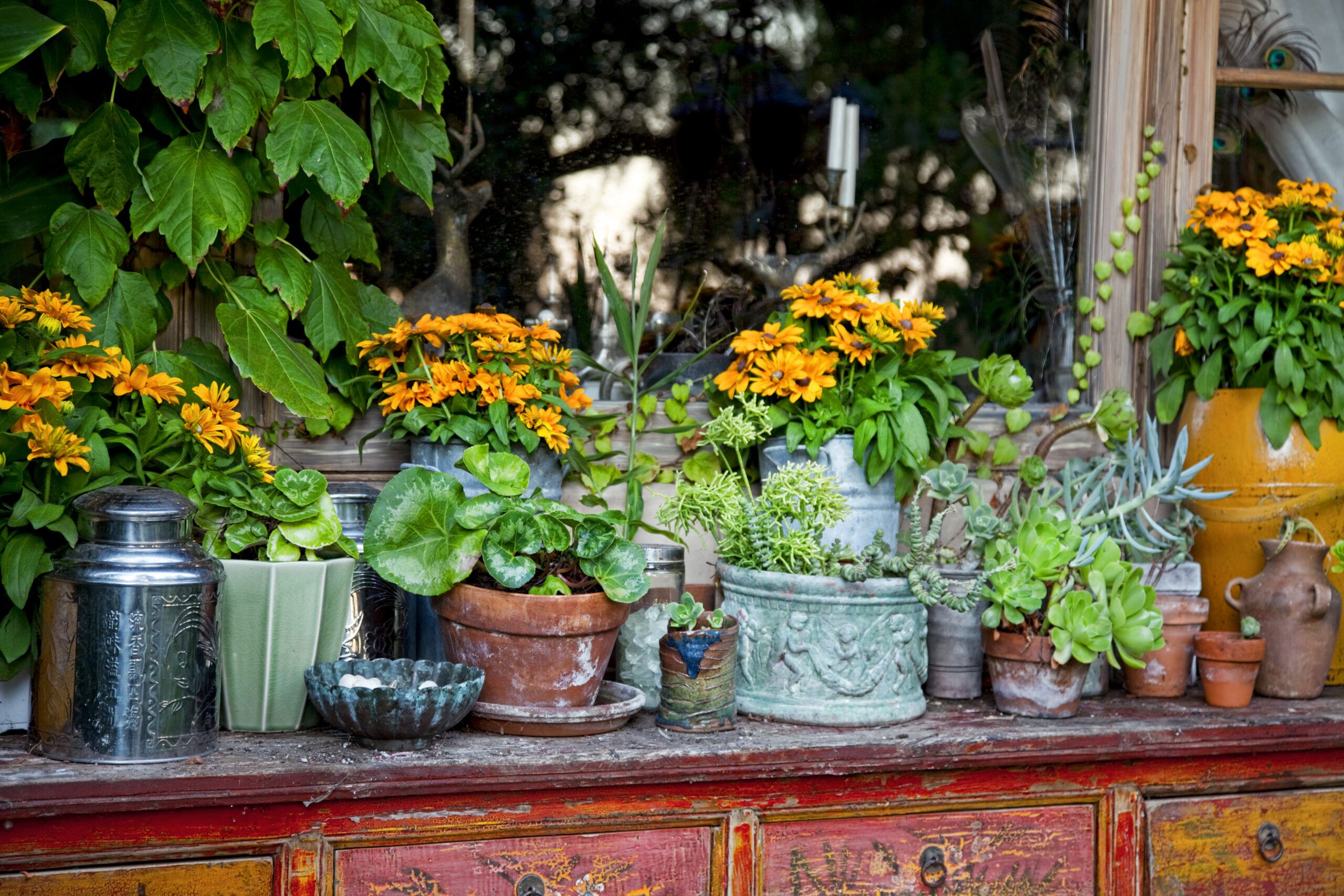
Dedicated display areas for your plant collections can be both visually appealing and practical. Group plants with similar needs together to make plant care more manageable and use varying heights and textures to create visual interest. Remember to rotate your plants seasonally to accommodate changing light conditions.
Ed is passionate about succulents, so he used pieces of furniture to build eye-level displays. A weather-sealed vintage pine table and a bureau became perfect platforms for his aeonium, Senecio, echeveria, and agave plants.
10. Embrace Unusual Displays
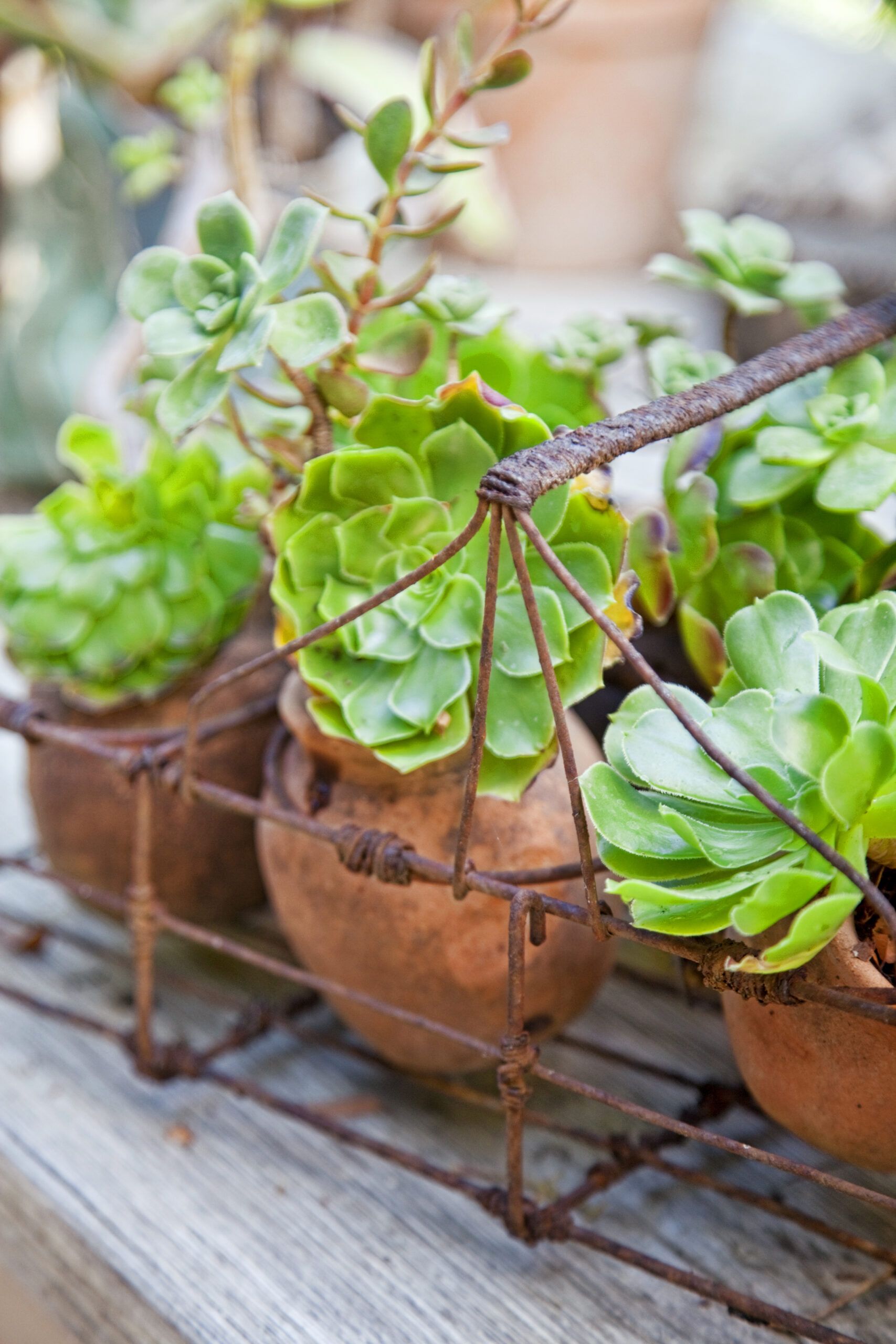
Think outside the box when displaying your plants. Unconventional containers or repurposed items can serve as eye-catching planters that spark conversation. In the Bealls’ garden, a rusty iron basket cradles some succulents, helping them stand out from the plant beds.
Tip: Make sure your funky planters have adequate drainage for your plants.
11. Let Decorative Elements Play Up Sound

Incorporate sound into your garden with water features, wind chimes, or plants that rustle in the breeze.
The Bealls integrated multiple water features throughout their landscape, each with a specific purpose. An octagonal basin fountain provides a soothing soundtrack for the herb garden, while a bubbling columnar fountain attracts hummingbirds.
When placing sound elements, consider your garden’s natural acoustics and how sound will travel. Aim to create a balanced soundscape that enhances rather than overwhelms.
12. Create a Fragrant Space
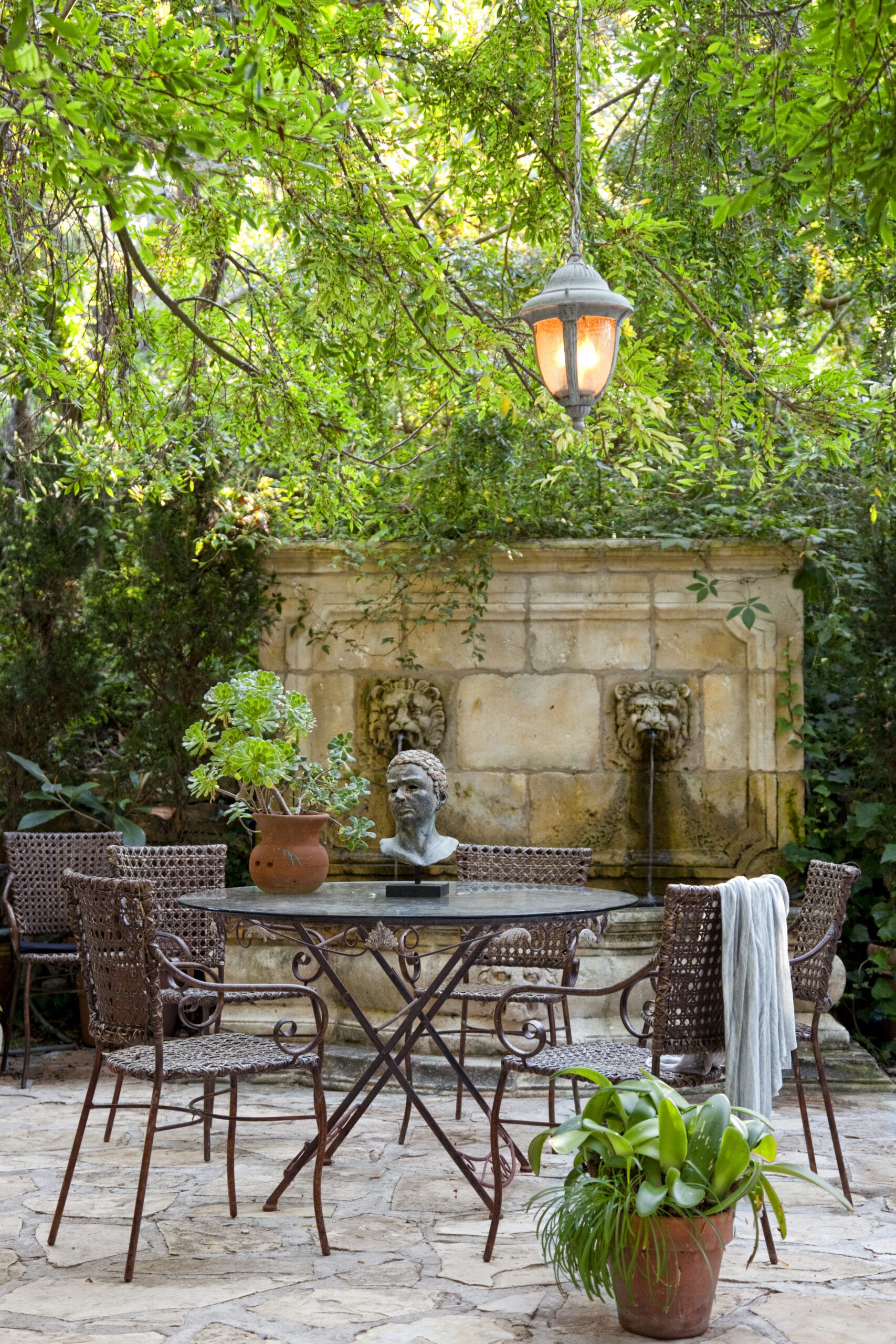
Strategically place scented plants throughout your garden to create a fragrant space. For example, you might place strongly scented plants near seating areas or pathways. Include herbs for both culinary use and aroma.
In the Bealls’ garden, honeysuckle and jasmine welcome visitors at the entryway while lemon blossoms perfume the air near giant herb garden containers. Night-blooming cereus opens its fragrant flowers around the main dining table, adding a magical element to their evening gatherings.
Remember to balance strong scents with more subtle ones to avoid overwhelming the senses and be mindful of the preferences of those who will use the space most.
13. Use Plants as Ornaments
Especially striking plants can serve as living sculptures in your garden. The Bealls used Italian cypress as green columns to frame their hillside views and dramatic foxtail agave rosettes to create dynamic contrasts along stairways and fountains.
Here are a few popular ornamental options we recommend:
- Sculptural succulents such as echeveria or aeonium for drought-tolerant landscapes
- Topiary forms of boxwood or yew for formal gardens
- Ornamental grasses with distinctive plumes or seed heads
- Trees with interesting bark or branch structures for winter interest
Choose ornamental plants that fit your garden’s scale and style to create focal points. Place them where they can be appreciated without outgrowing their space or overshadowing other garden elements.
14. Add Splashes of Color With Ceramics
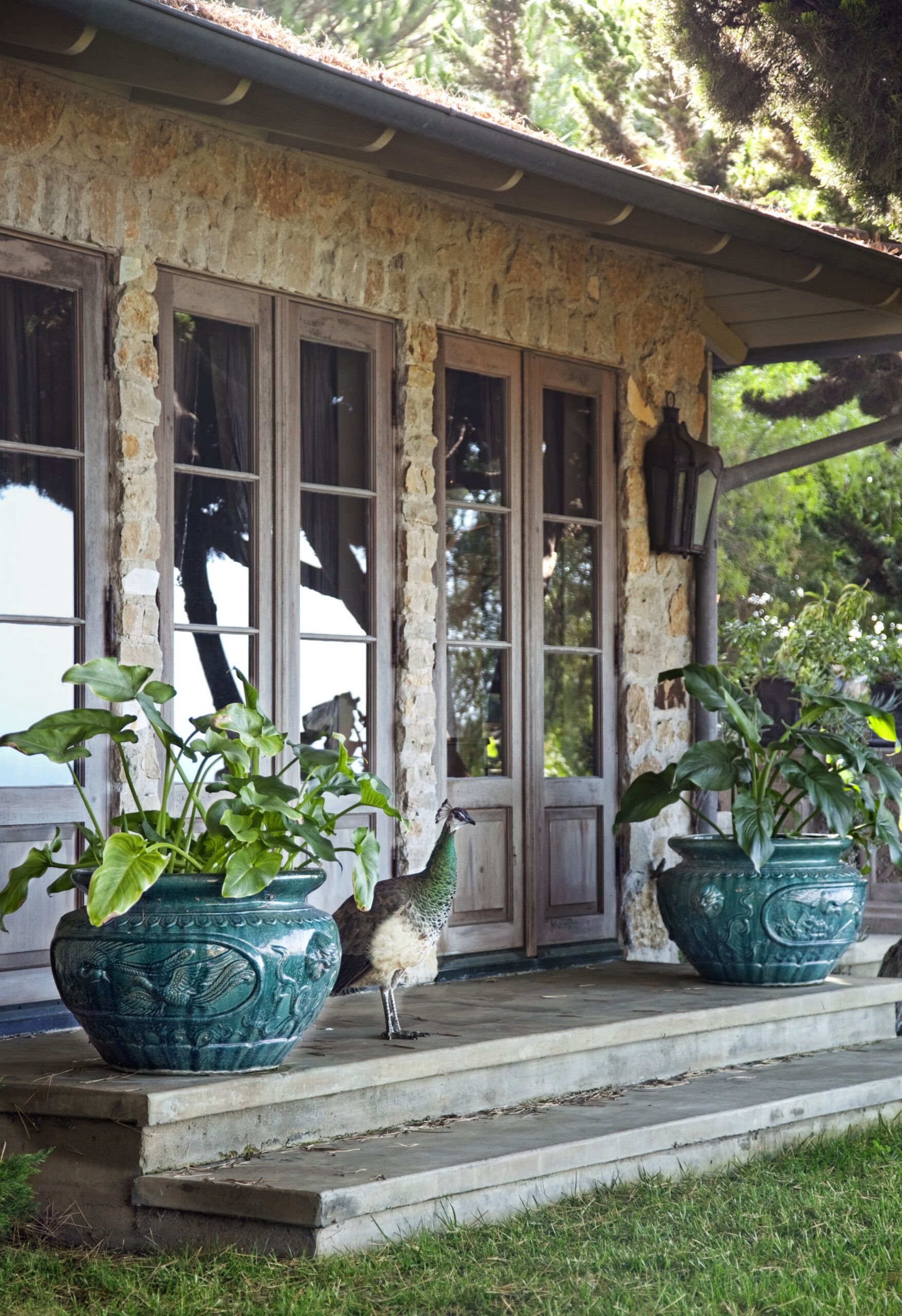
Strategic use of color creates visual interest throughout a garden. Ceramic pots and planters offer an excellent way to introduce contrast.
The Bealls used teal-blue ceramic pots filled with foliage plants to flank the French doors on a patio outside their main bedroom. These vibrant containers draw the eye from a distance and provide a striking contrast to the surrounding greenery.
Here are some tips for using ceramics effectively:
- Choose colors that complement your home’s exterior and existing garden palette.
- Choose plant and planter combinations that enhance each other.
- Group pots of varying sizes but similar colors for a cohesive look.
- Rotate seasonal plants to keep the garden fresh throughout the year.
- Use large, bold-colored pots as focal points in key areas.
Remember that less can be more—a few well-placed, colorful elements can have more impact than a mass of competing hues.
15. Repurpose Found Objects as Containers
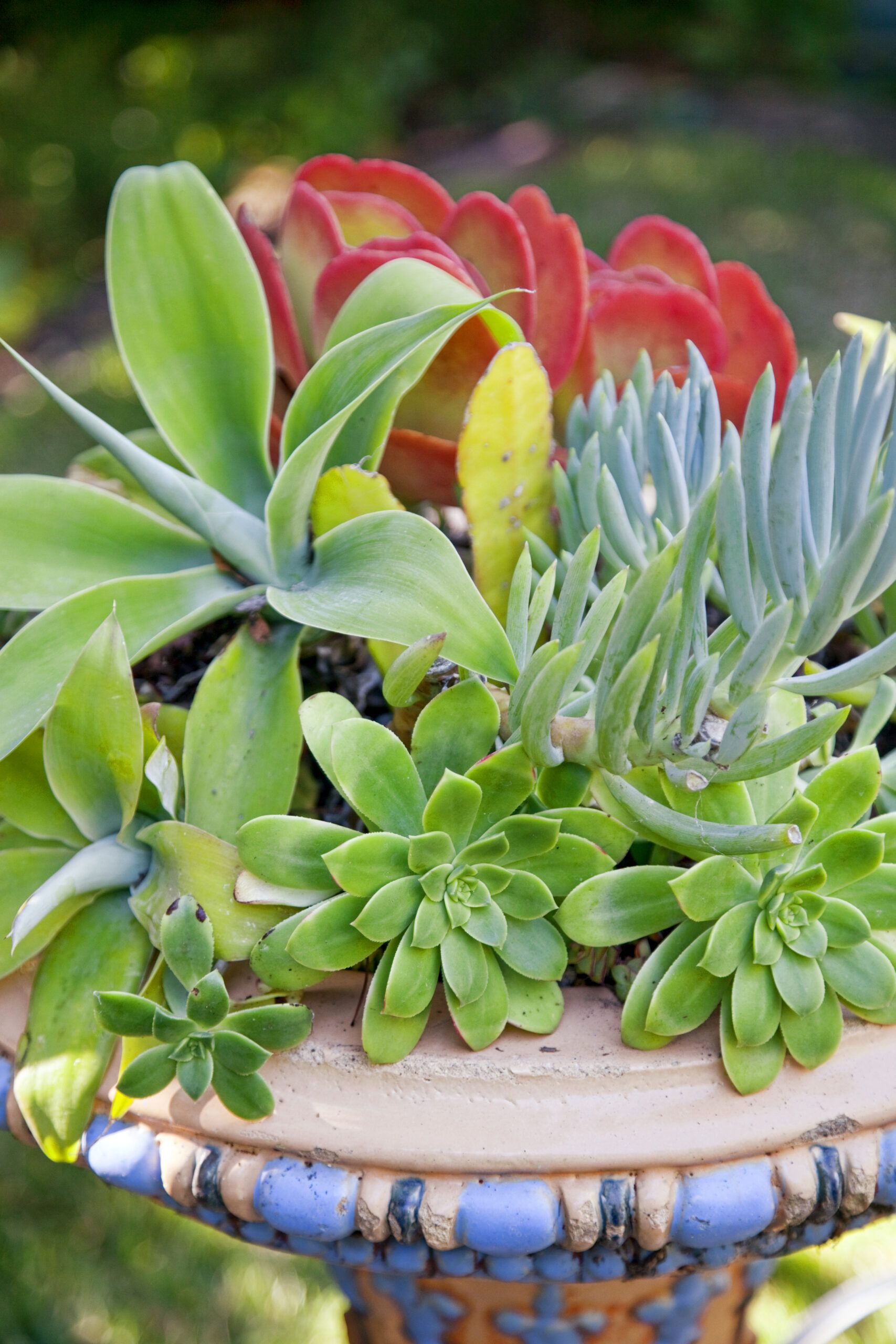
Incorporate repurposed items as planters to add character to your garden. You might use antique metal watering cans, hollowed-out logs, old wooden crates, or vintage sinks as planters. Make sure they have proper drainage and are durable enough for outdoor conditions. You can treat or seal the items to prolong their performance.
The Bealls creatively repurposed a 1920s drinking fountain, complete with vintage Malibu art tile, as a succulent planter (above). This unexpected choice brings a touch of whimsy and adds history to their garden.
16. Give a Garden a Lived-In Look
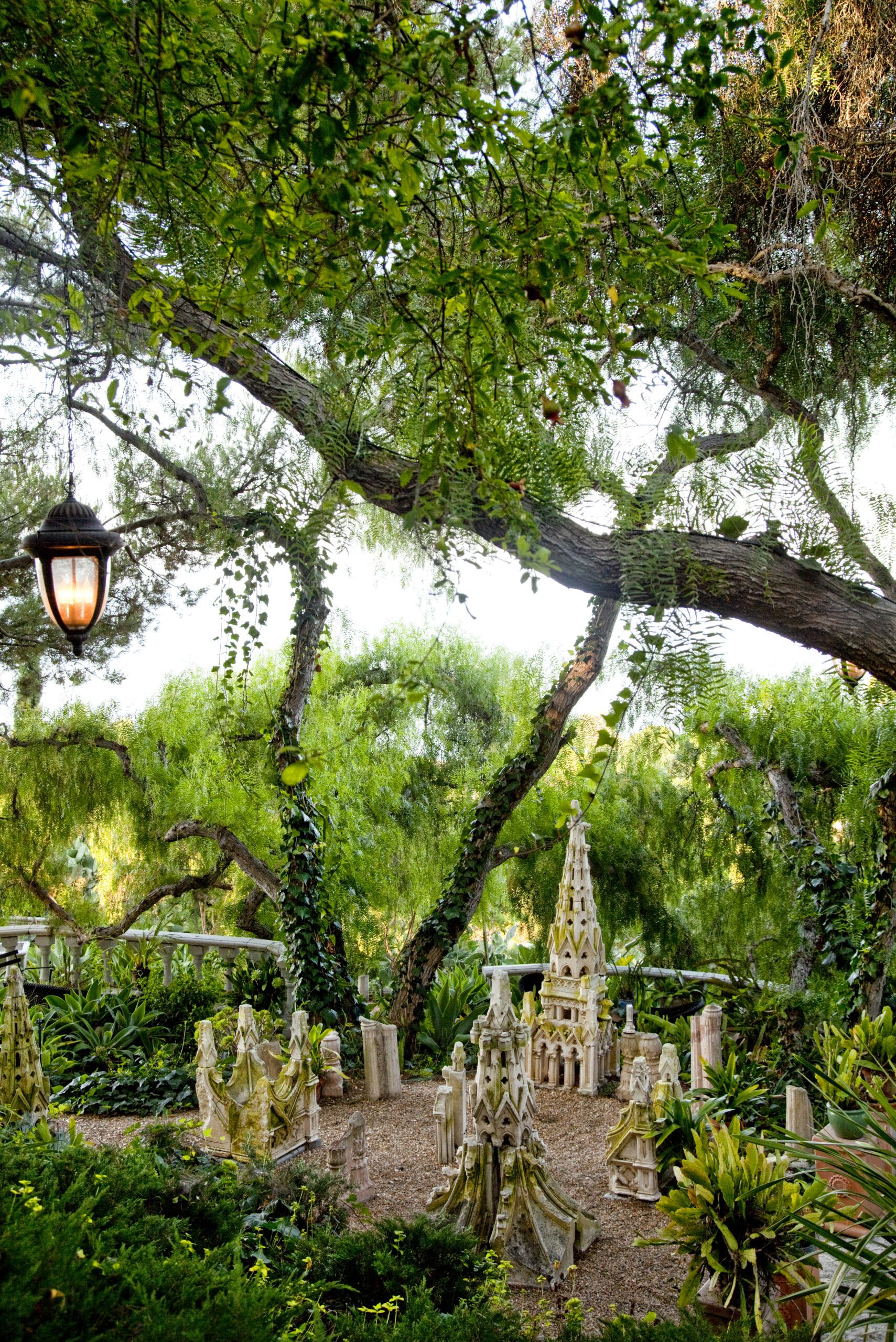
Create a sense of permanence by incorporating antique or weathered elements. Integrate salvaged architectural elements, plant fast-growing vines to soften new structures, or use weathered wood for raised beds.
The Bealls added Gothic cathedral fragments purchased from a salvage dealer to their garden for a lost-city feel. Strive for a balance between old and new to avoid a contrived or cluttered appearance, making the garden feel like it has naturally evolved over time.
17. Lend Some Historical Context
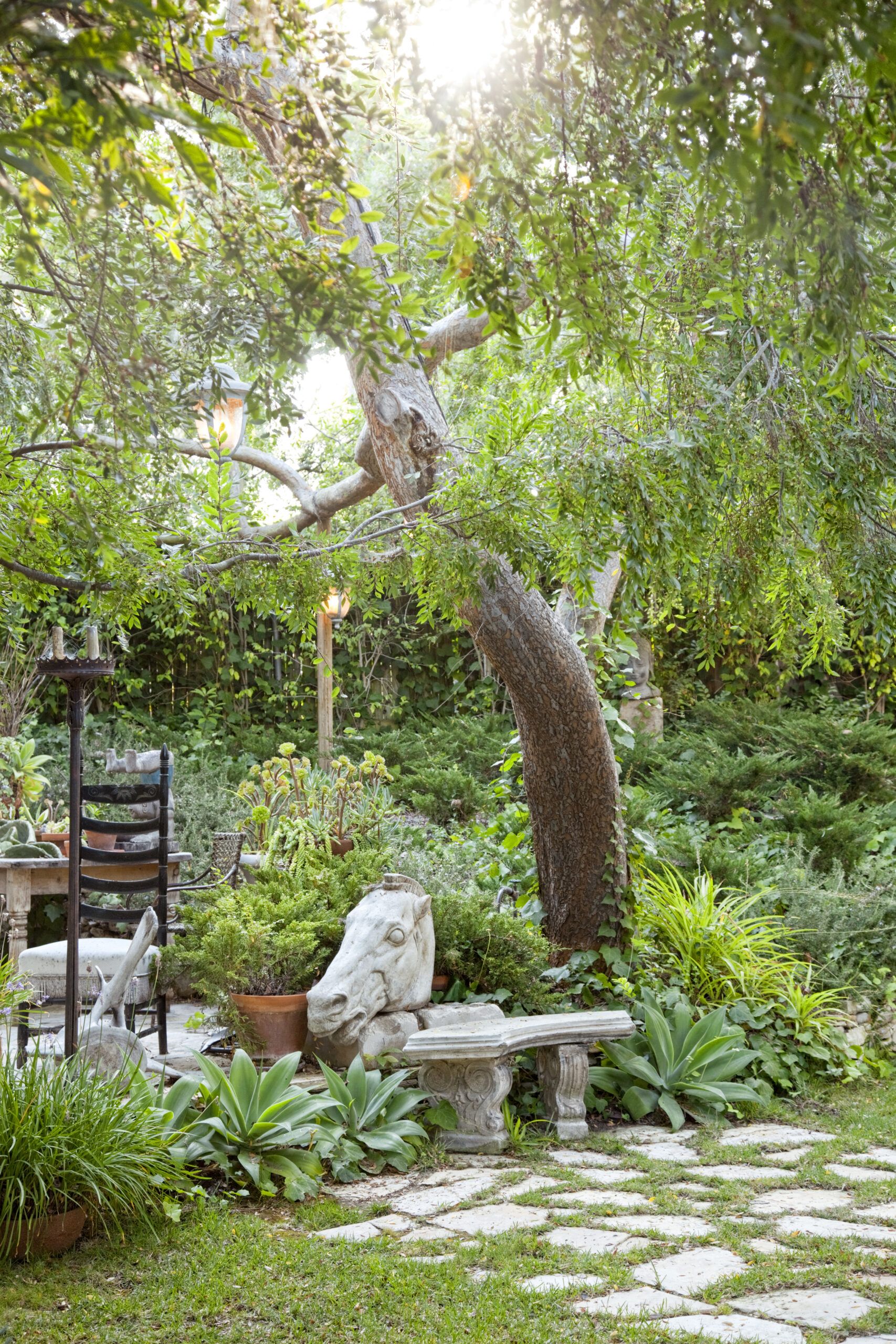
Include historical elements to enrich your garden’s story. In their garden, the Bealls placed a concrete horse’s head—a cast from one that had adorned the Parthenon—beside a bench. The garden-ornament catalog find is right where a seated visitor can reach out and touch it.
Here are a few more ideas for inspiration:
- Artifacts that reflect regional history or important milestones
- Architectural salvage and reclaimed materials from historical buildings
- Markers or plaques that explain the historical significance of particular elements
- Plants that have historical or cultural relevance to the area or your family’s heritage
- Vintage or antique furniture and ornaments that have personal or historical significance
18. Mix in Some Old World Flavor
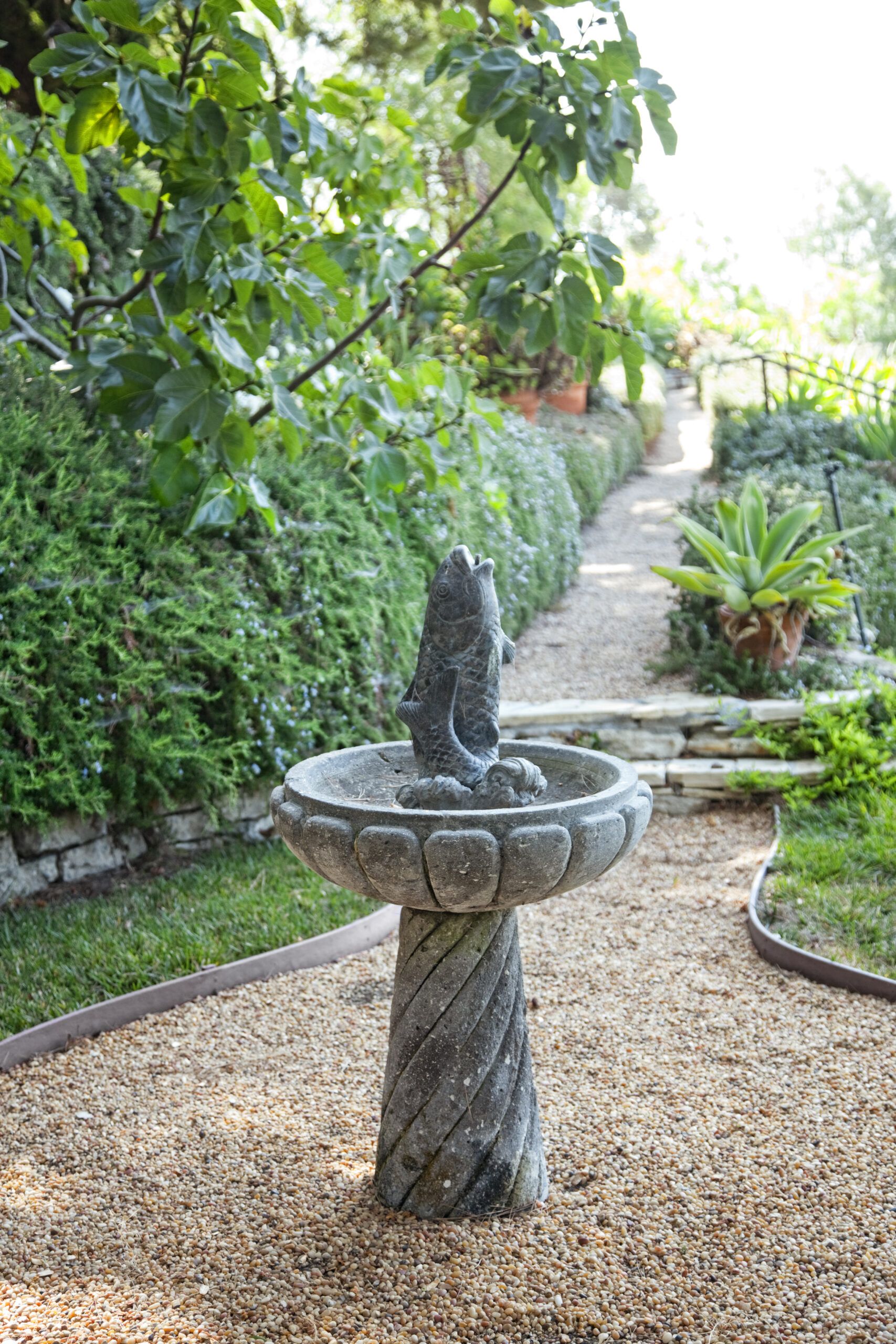
Add a touch of Old World charm to your garden with items from flea markets or salvage yards. For instance, a birdbath can mimic the look of a classic European fountain. Complement this focal point with rusty lanterns, vintage plant baskets, and antique watering cans. These elements can quickly infuse your garden with a sense of history and character.
